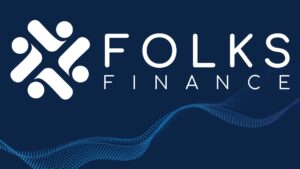DeFi is rapidly evolving, and among the newest entrants making waves is Folks Finance. If you’ve seen the ticker FOLKS in crypto listings or heard about its airdrop, you’re probably wondering what drives this protocol, how the Folks Finance (FOLKS) Explained token works, and whether it has meaningful long-term potential. We’ll also explore the underlying technology and risks you should know before engaging with FOLKS in the DeFi ecosystem.
What Is Folks Finance?
Folks Finance is a cross-chain DeFi protocol that aims to simplify decentralised lending, borrowing, staking, and asset management across multiple blockchains. At its core, Folks Finance operates as a non-custodial platform, giving users the ability to supply collateral, borrow funds, stake to earn yield, or participate in governance.
The project positions itself as a next-generation DeFi hub that merges lending markets, staking or governance derivatives, and flexible borrowing products under one umbrella. Its goal is to reduce friction for cross-chain DeFi users and developers, providing liquidity and lending opportunities without needing multiple fragmented interfaces.
Folks Finance has attracted institutional interest and venture-fund backing. It raised over $6.2 million in funding rounds, including seed and Series A rounds.
In short, Folks Finance is not just “another lending protocol.” It seeks to combine multi-chain liquidity, governance, and token-driven incentives in order to scale DeFi usage across chains under a unified platform.
Airdrop Season 1: How the FOLKS Token Was Distributed
Eligibility & Snapshot
Folks Finance launched Airdrop Season 1 to distribute its native FOLKS tokens to early adopters and community contributors.
Eligible groups included users who earned Folks Points via leaderboard campaigns, holders of “Founders Pass” NFTs, and participants in campaigns run by partner platforms such as OKX Wallet, Gate Wallet, Zerion, Airaa, and others.
Allocation Method & Claim Mechanics
The airdrop used a logarithmic weighting for Folks Points allocations.
Founders Pass NFT holders received a base allocation plus bonuses depending on the NFT tier (Silver, Gold, Black).
Once the claim opened on November 6, 2025, at 14:00 UTC, eligible recipients had two claiming options:
-
Instant Claim — 20 % of the allocated FOLKS tokens could be claimed immediately.
-
Linear Unlock — 10 % was made available at claim time, with the remaining 90 % unlocked linearly over 90 days, beginning December 16, 2025, and completing by March 16, 2026. Claim window closes March 31, 2026.
If you didn’t complete your selected claim method by December 16, the allocation might be forfeited; unused tokens after the final date could be lost.
Significance of the Airdrop

The airdrop served multiple purposes: it created awareness, rewarded early community engagement, and seeded governance participation from holders. Because part of the allocation unlocks over time, it also helps to dampen immediate sell pressure that often follows big token giveaways.
For participants, the airdrop represents not just free tokens, but also ownership and incentive to remain involved with protocol governance, staking or strategy decisions.
Tokenomics: Supply, Allocation & Vesting
Understanding the tokenomics behind FOLKS is crucial for gauging its long-term potential, scarcity, and risk profile.
Total Supply & Circulating Supply
The total supply of FOLKS tokens is 50 million.
At launch, the circulating supply was approximately 12,700,475 FOLKS tokens.
This means a significant portion of the total supply remains locked, vested, or earmarked for future ecosystem use rather than being freely tradable at first.
Allocation Breakdown
Token allocation has been divided among multiple stakeholder categories. According to public reporting:
-
35 % of tokens are allocated to the community.
-
10 % is allocated to core contributors.
-
A portion goes to seed supporters and strategic backers; for example, the Bitget-sourced reporting notes that seed supporters receive about 21.83 %, strategic supporters about 4.94 %, and advisors around 3.5 %.
-
Ecosystem growth allocations exist too (for instance, in one breakdown, own “24.73 % used for ecosystem growth”).
Additional allocations may include team & shareholder pools, treasury reserves, or other locked-fund categories, depending on the version of the tokenomics documentation.
Vesting & Unlock Schedule
Because much of the token supply is not immediately circulating, vesting and unlock timing matter significantly. Some tokens are subject to extended lock-ups, while others unlock gradually over months or possibly years.
Fully Diluted Valuation (FDV)
Because the current circulating supply is lower than the total supply, the fully diluted valuation (FDV) of FOLKS — that is, its market cap if all 50 million tokens were in circulation — is higher than its current market cap. Some platforms list FDV around $240 million (for example, on MEXC tokenomics pages).
That gap between current market cap and FDV is important: it signals that future unlocks may exert downward pressure at times of vesting release, or conversely provide more liquid supply for growth activities.
Governance & Utility
Beyond simple supply numbers, FOLKS is not just a token for price speculation. It’s the governance and utility token within the Folks Finance ecosystem. Token holders are expected to have voting rights on protocol upgrades, parameter changes, or proposals that affect lending markets, staking rewards, or multi-chain roadmap decisions.
Price & Market Data for FOLKS
Current Price & Market Cap
As of recent listing and live tracking, FOLKS is trading at around $4.50 USD on CoinGecko.
CoinGecko reports a 24-hour trading increase of about 55 % with a 24-hour price range from roughly $2.85 USD up to $6.83 USD on that same day.
CoinMarketCap shows a slightly different price — approximately $4.85 USD, with a market cap of around $59.17 million USD and a 24-hour trading volume exceeding $68 million USD.
Volatility & Recent Price Swings
The initial days after listing have shown high volatility for FOLKS. Price swings of tens of per cent within 24-hour windows suggest high speculative interest.
Such volatility is common for newly launched tokens, especially those with a large airdrop distribution and limited circulating supply initially. As more tokens unlock or as trading spreads to additional exchanges, markets may stabilise or experience further adjustment.
Supply-Related Pressure & Price Risk
Since only a fraction of the total supply is circulating initially, subsequent vesting or unlocks could increase market supply. That increase may create selling pressure unless matched with growing demand from users, staking, or governance participation.
The balance between incentive programs and vesting releases will significantly influence future price trends.
Comparison with Competitors
Tokens from comparable lending protocols, especially those supporting multi-chain usage, may impact investor sentiment and relative valuations. Assessing FOLKS against benchmark tokens or DeFi hubs could give context to whether its price is undervalued or overhyped based on fundamentals such as Total Value Locked (TVL), user growth, or on-chain activity.
Risks, Opportunities & What to Watch

While Folks Finance has promise, it is not without risk. Some of the key variables that could determine whether FOLKS succeeds or struggles include:
-
Unlock schedule timing: Future unlock events — when large quantities of FOLKS tokens vest or become liquid — may lead to price corrections if not matched by growing demand.
-
Protocol adoption & liquidity: The real test for the project will be usage — how many users borrow, stake, lend, or swap via its features across supported blockchains. If usage grows, token demand may rise; if activity lags, price may struggle.
-
Governance participation: If token holders engage with governance and use FOLKS holdings for voting or staking, that strengthens alignment between token value and protocol health.
-
Competition & regulation: DeFi remains competitive, and regulatory scrutiny around cross-chain lending, stablecoins, or collateral requirements may affect growth or impose constraints on protocol design.
-
Market sentiment & macro trends: As with all crypto, FOLKS’s price is sensitive to overall risk appetite, interest rate regimes, regulation changes, or macroeconomic shifts. A bullish crypto cycle may help FOLKS, while downturns may dampen investor interest.
-
If it delivers usable features, attracts liquidity, and scales responsibly, the FOLKS token may grow in value alongside the ecosystem.
Conclusion
Folks Finance (FOLKS) enters the DeFi space as a modern, multi-chain lending and staking protocol that combines decentralised governance, token incentives, and interoperability ambition.
While the project has strong foundational design and venture-backed support, its future depends on execution: fostering liquidity, managing unlock schedules, and driving usable adoption across its supported chains. For users interested in FOLKS, it’s not just about speculation — it’s about becoming part of a growing governance-driven ecosystem with cross-chain ambition.
FAQs
Q: How many FOLKS tokens are currently circulating?
At launch, about 12,700,475 FOLKS tokens are circulating out of a total supply of 50 million.
Q: What was the FOLKS airdrop claim window?
The airdrop claim window for Season 1 opens d November 6, 2025, at 14:00 UTC. Claim options included both instant and linear-unlock mechanisms.
Q: What cent of FOLKS tokens is allocated to the community?
Approximately 35 % of the FOLKS token supply is designated for community allocation under the tokenomics plan.
Q: What is the current price of FOLKS?
FOLKS is currently trading in the range of around $4.50 USD (CoinGecko) to $4.85 USD (CoinMarketCap), depending on the listing.
Q: Can unlocking schedules affect FOLKS’S price in the future?
Yes. Because many tokens are locked or vested for months ahead, the timing and size of unlocks may introduce supply pressure unless matched by increasing demand from staking, adoption, or governance participation.
Read more: Solana ETFs Hit 4-Day Inflow Streak — What’s Driving the Surge?




